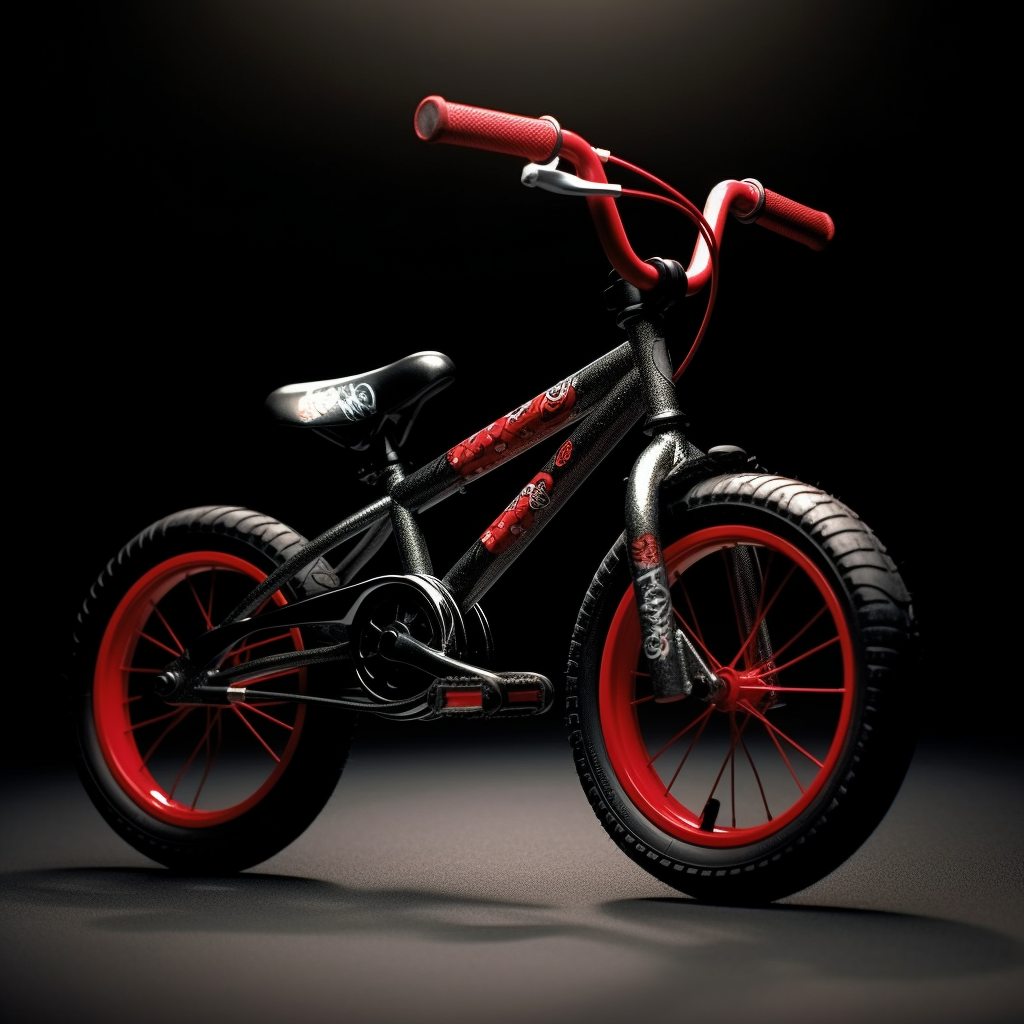Ever find yourself lost in the bike aisle, your eyes glazing over rows of shiny new bicycles? I’ve been there. It’s like being a kid in a candy shop – totally overwhelmed and uncertain of what to pick.
“Which one is for me?” you ask, eyeballing those towering 26 inch bikes. They’re intriguing but are they right for you?
In this article we will shed light on this very question: “26 inch bike for what size person?” We’ll explore the vast world of bicycle sizes, delve into specifics of 26-inch bikes, compare them with other sizes and give practical tips along the way.
The goal here isn’t just knowledge – it’s empowerment. By journey’s end, you’ll not only understand which bike fits your needs but also how to make any necessary adjustments for that perfect ride!
Table Of Contents:
- Understanding Bike Sizes
- The 26 Inch Bike Explained
- Who Should Use a 26 Inch Bike?
- Comparing 26-Inch Bikes with Other Sizes
- Sizing Charts for Reference
- Adjusting Your Bike for a Better Fit
- Tips for Choosing the Right Bike Size
- Conclusion
Understanding Bike Sizes
Bike sizes can seem like a maze of numbers and inches. It’s not just about the wheel diameter, but also regarding frame height and how it fits you. But don’t worry, we’re here to give you a helping hand.
Different bike sizes exist because everyone is unique in their proportions. A properly sized bike not only makes your ride more comfortable but it lets you cycle safely too.
The Significance of Wheel Size
You’ve probably heard terms like “26-inch bike”, “28-inch bike”, or even “29er”. These figures refer to the diameter of the wheels on a bicycle, measured from edge to edge including tires. This measurement is especially crucial for mountain bikes where terrain response matters most.
A 26 inch wheel was once considered standard for mountain bikes due to its great balance between speed and stability. Recent trends, however, have shifted towards larger 27.5-inch or 29-inch wheels for better roll-over ability over obstacles while riding off-road.
Finding Your Frame Size
The right frame size depends on your individual body measurements – particularly your leg length or leg inseam measure as well as torso length.
Note: To get accurate measure of your bike frame one might need some help from another person or use an online bicycle frame size calculator.
Once you have your measurements, check them against a bike sizing chart. These charts provide a good starting point but remember that nothing beats actually trying out the bike.
The Rider’s Height and Age Matter Too
Apart from wheel and frame sizes, it’s also essential to consider the rider’s standover height and age when choosing a bicycle. Kids’ bikes, for instance, are measured differently than adult bicycles. They’re typically sized by their wheel diameter because kids grow at different rates.

The 26 Inch Bike Explained
When it comes to the world of cycling, bike size matters a lot. One popular option is the 26-inch bike, named for its wheel diameter. This specific dimension offers unique benefits and suits certain riders better than others.
A key feature of 26-inch bikes is their nimbleness on trails. They’re agile machines that allow quick maneuvering through technical terrain – an attribute appreciated by mountain bikers globally.
Dynamics of Riding a 26 Inch Bike
Riding dynamics are influenced significantly by bike size, with the smaller stature of a 26-inch model offering lower center gravity compared to larger sizes like 28 or 29 inches. Think about how sports cars are typically low-slung; this helps them corner at high speeds without tipping over – similar principles apply in biking.
The reduced height also makes getting on and off easier which can be especially helpful for shorter riders or those new to cycling who might find taller bikes intimidating.
Suitability Based on Rider’s Height

Height plays a significant role when deciding if a 26-inch bike is right for you. Generally speaking, individuals between heights of around five feet and six feet may find these models most comfortable.
| Bike Size | Rider’s Height (Feet) |
|---|---|
| 26-inch | 5 – 6 feet |
| 28-inch | Above 6 feet |
| 29-inch | Above 6.2 feet |
Note: These are general guidelines, and individual comfort can vary based on factors like leg length and riding style.
The Case for Versatility of Use
more than just about height. A 26 inch bike can show real versatility in how it’s used, providing a ride that’s flexible for various terrains and rider styles.
Who Should Use a 26 Inch Bike?
If you’re on the lookout for a bike, size is key. But how do we know which one’s right? Let’s talk about 26-inch bikes.
Height Matters
Think about your height first when picking a bike. Generally speaking, if you stand between 5 feet and 5 feet,7 inches tall, then a 26-inch bike might be just right for you.
This doesn’t mean that if you’re taller or shorter it won’t work at all. It simply means that with this height range, the fit tends to be more comfortable and safer.
A Matter of Age
Age also plays an important role in picking out your perfect ride. Biking experts suggest that these bikes are often suitable for teens starting from age 11 onwards since their body proportions match well with this particular size.
Bonus tip: If kids under eleven show interest in biking but aren’t quite big enough yet for adult-sized wheels they could use junior versions instead.

Versus Other Sizes: The Comparison Game
Surely there must be other sizes as well. Indeed there are – take the 28-inch or even larger wheels like the colossal 29-inches. These bigger bikes typically suit those who tower over others at 6 feet and above. The smaller 24-inch bikes, on the other hand, are ideal for those shorter than 5 feet.
However, a bike’s size isn’t just about height – it’s also about your comfort level and how you want to use the bike. If you plan on mountain biking or off-roading, then a larger wheel might be better due to its ability to cover rough terrain more easily.
Sizing Charts: A Handy Guide
Still unsure? There are plenty of bike size charts available online. These guides offer visual cues and measurements that can help pinpoint what bike size could fit best.
Choosing a 26-inch bike? Your height and age are key factors. This size is typically suitable for people between 5 feet to 5 feet,7 inches tall or teens starting from age 11. Remember, comfort and use matter too – larger wheels might be better for off-roading. Unsure still? Check out online sizing charts.
Comparing 26-Inch Bikes with Other Sizes

When you’re out shopping for a new bike, it’s essential to get the right size. One of the common sizes you’ll come across is the 26-inch bike. But how does this compare with other bikes like those that are 28 or 29 inches? Let’s explore this further.
Differences in Bike Size: The Basics
The size of a bike refers to its wheel diameter. The diameter of a 26 inch bike’s wheels is, as the name implies, 26 inches. On the other hand, larger bikes such as those sized at 28 or even up to 29 inches, have correspondingly larger wheels.
This difference might seem minor but it can significantly affect your riding experience. Larger wheels generally give more stability and roll over obstacles easier than smaller ones – they’re often preferred by taller riders or off-road enthusiasts who value these qualities.
Sizing It Up: Who Fits What?
A crucial aspect when choosing your perfect bicycle is matching it to your height and age. For example, an adult who stands between 5’0″ and 6’0″ tall would typically find comfort on a 26-inch bicycle.
| Bike Size (Inches) | Rider Height (Feet & Inches) |
|---|---|
| 26 | 5’0″ – 6’0″ |
| 28 | 5’3″ – 6’2″ |
| 29 | Above 6′ |
a more comfortable ride on a larger bike. But remember, it’s not just about height – comfort and control are key too.
Sizing Charts for Reference
Understanding the right bike size is crucial to ensure a comfortable and safe ride. Explore some useful sizing charts to help you locate the right size, particularly if looking at a 26-inch bike.
Bike Size Based on Rider Height
The most common way to determine the correct bike size is by considering the rider’s height. Here’s a simple chart from Bicycling Magazine, which breaks down ideal bike sizes based on various heights:
| Rider Height (in feet) | Ideal Bike Size (in inches) |
|---|---|
| 4’11” – 5’3″ | 13 – 15″ |
| 5’3″ – 5’7″ | 15 – 17″ |
| 5’7″ – 6′ | 17–19″ |
| 6’0″ – 6’4” | 19-21″ |
Note: these are general guidelines and might vary based on individual body proportions and riding style.
Bike Sizes Compared: From Kids To Adults
Different bikes serve different purposes, so let’s look at another comprehensive guide I found at Evans Cycles that shows bike sizes ranging from kids to adults.
| Age Group | Ideal Bike Size (in inches) |
|---|---|
| Kids (5-8 years) | 16 – 20″ |
| Youths (9-12 years) | 24″ |
| Tweens and Teens (13+ years) | 26″ + |
| Adults | 28″ – 29″ |
This chart should give you a rough idea about the right size for different age groups.
Adjusting Your Bike for a Better Fit
A proper fit is essential for an enjoyable cycling experience. So, let’s dive into how to adjust a 26-inch bike to better suit you.
Finding the Right Saddle Height
Your saddle height is key when it comes to comfort and efficiency on your ride. An incorrect saddle height can lead not only discomfort but also injuries over time. To get the right height, sit on the saddle with one heel on the pedal at its lowest point. If your leg is straight (knee fully extended), then that’s about right. Bicycling Magazine provides an excellent guide if you need more help here.
Handlebar Position Matters Too.
Your handlebars should be set so they’re comfortable for long rides without causing strain in your neck or shoulders. The correct position varies from person to person because we all have different body proportions and flexibility levels; however, generally speaking, they should be level with or slightly below the seat. REI has some great tips regarding this topic too.
Dialing In Your Reach Length
“Reach length” refers to the distance between you and the handlebars when seated properly on the bicycle’s saddle – yes, there’s science behind this as well. It’s crucial that the reach length doesn’t force you to stretch excessively just to grip the handles since it would cause fatigue over time and may even impact handling stability during the ride. To fix this, try adjusting the fore-aft position of your saddle or replacing the stem with a shorter one. BikeRadar offers some good advice on how to get it just right.
Tips for Choosing the Right Bike Size
Choosing the right bike size can be a game-changer. Not only comfort, but also your performance and safety should be taken into account when selecting the ideal bike size.
Consider Your Height and Inseam Length
The first step to getting the right bike is knowing your height and inseam length. These measurements give you a starting point when looking at bike sizing charts. Remember, each brand might have slight variations in their sizes.
Analyze The Bike Types
Different types of bikes often have different sizing standards. For example, mountain bikes tend to run smaller than road bikes due to their design differences. Be sure to consider this when making comparisons between models or brands.
Test Ride Is Crucial
No chart or advice can replace an actual test ride. This gives you firsthand experience on how comfortable and manageable the bike is for you before purchase.
Bike Adjustments Matter Too.
Your bicycle should adapt to you – not vice versa. Saddle height, handlebar reach, even pedal position can all be adjusted for better fit. Setting up your saddle correctly, for instance, will help avoid any discomfort during rides.
- If standing over the bike frame with feet flat on ground: there should ideally be 1-2 inches clearance for road bicycles and 2-4 inches for mountain bikes.
- When sitting on the saddle with one pedal at its lowest point, your knee should be slightly bent. This indicates a good saddle height.
- Your elbows should have a slight bend when hands are on handlebars to avoid overstretching and maintain control while riding.
Finding the right bike size might require some patience and research but remember – it’s all about getting you out there enjoying every ride.
Choosing the right bike size is more than just comfort—it impacts your performance and safety too. It starts with knowing your height and inseam length, understanding different bike types’ sizing standards, taking a test ride, and making necessary adjustments for a better fit. The goal? Enjoy every ride.
Conclusion
So, we’ve journeyed through the world of bike sizes. Now you know that a 26-inch bike isn’t just for anyone – it’s perfect for those standing around 5 feet to 5 feet 7 inches tall.
You’ve grasped the difference between this and other sizes. And you’re now aware of how adjustments can fine-tune your ride experience.
Remember: Bike size matters. Don’t overlook this when making your selection. Ask yourself, who is the 26 inch bike best suited for?
The right fit ensures comfort and safety while boosting performance on every trail or road ahead!
If you ever feel lost again in these various choices, keep these tips in mind.
